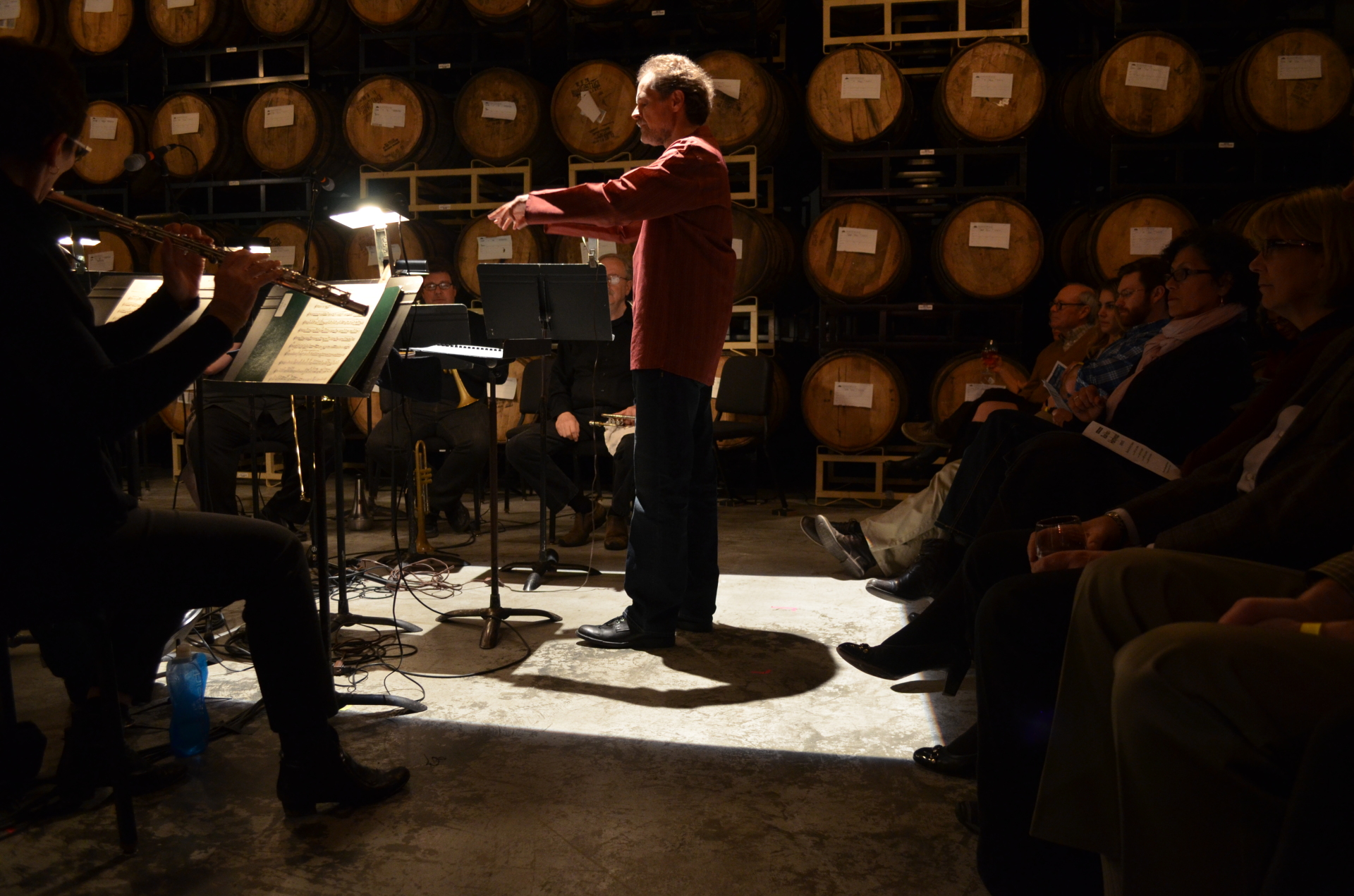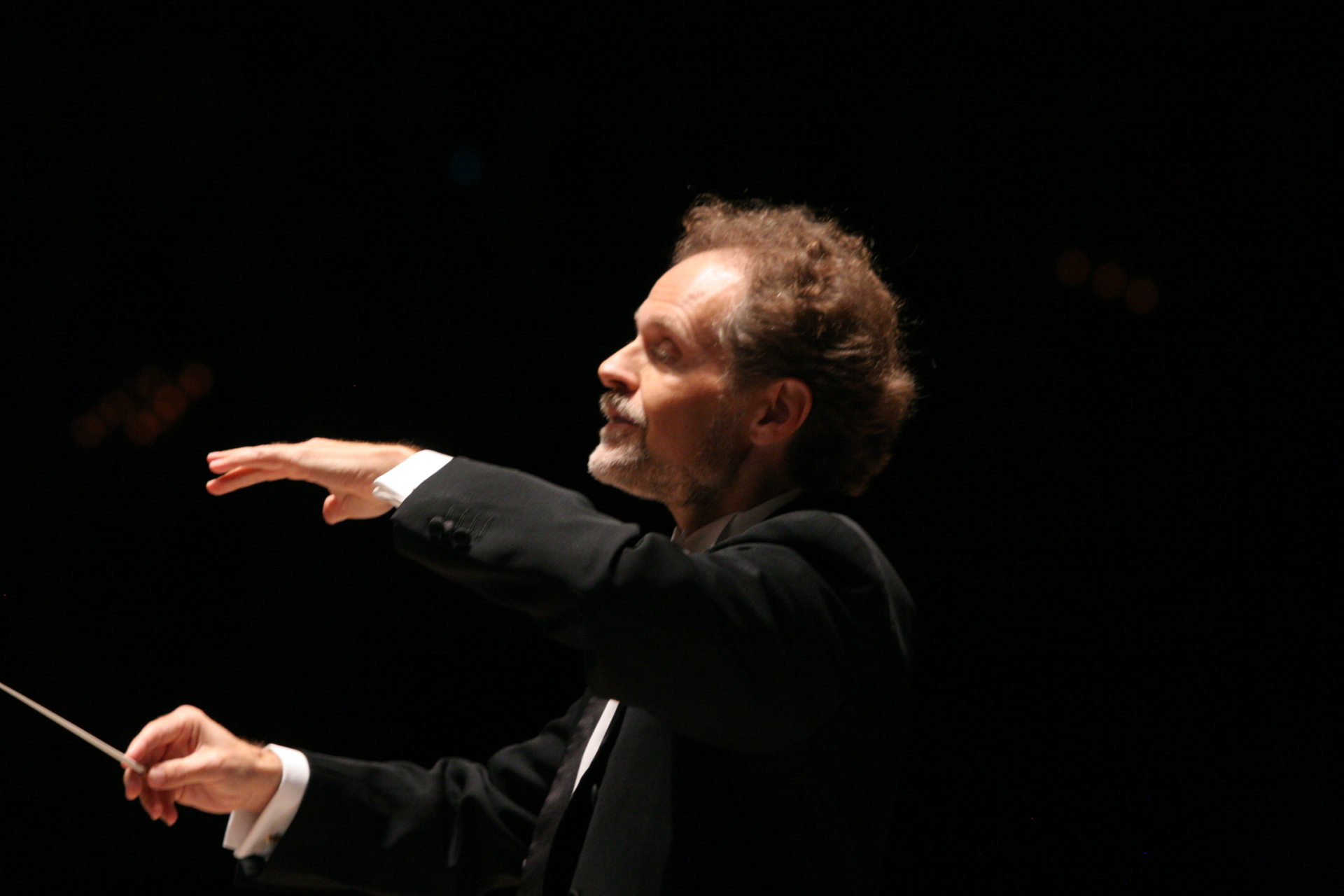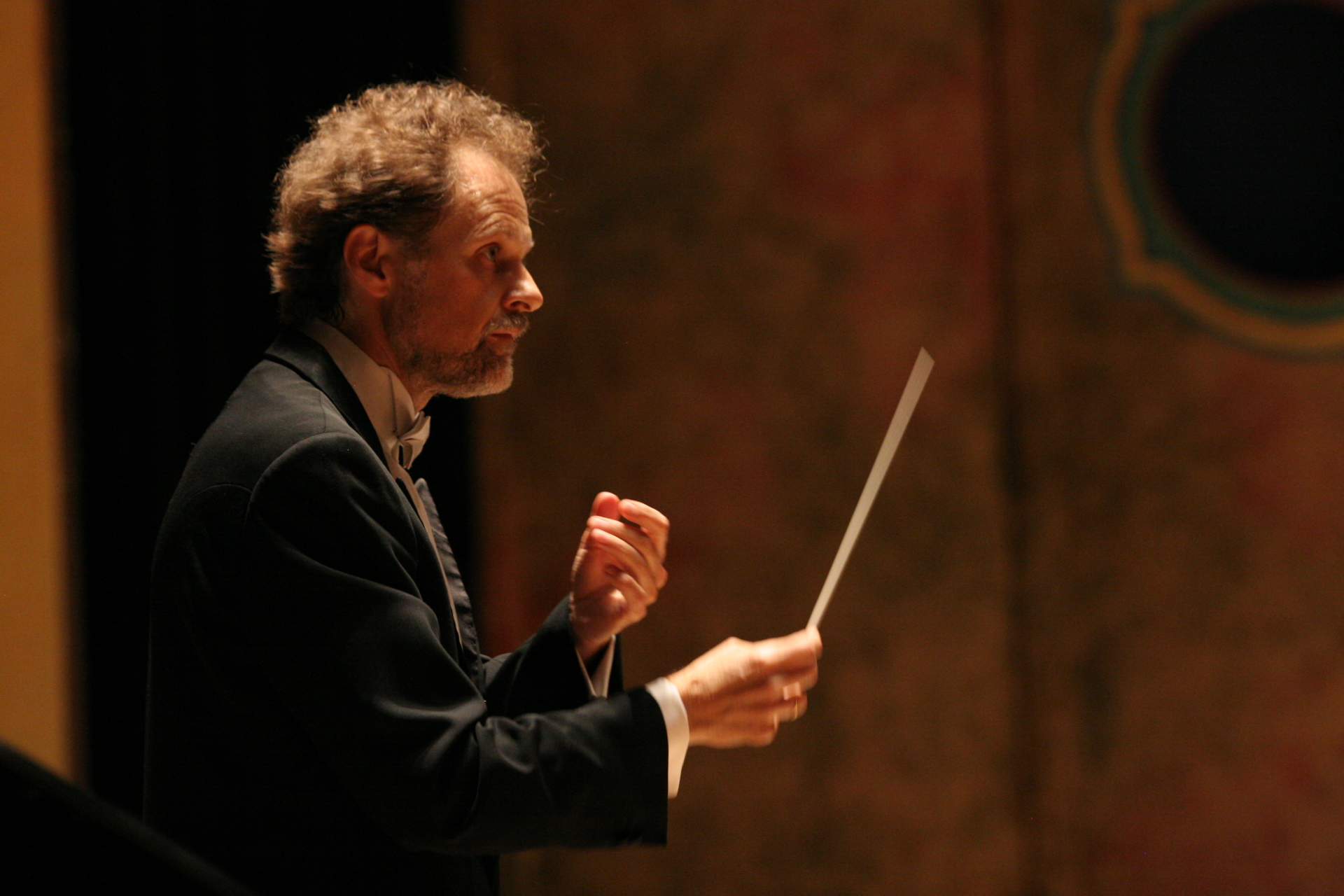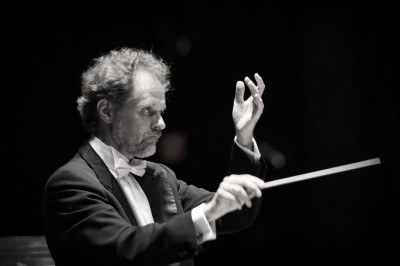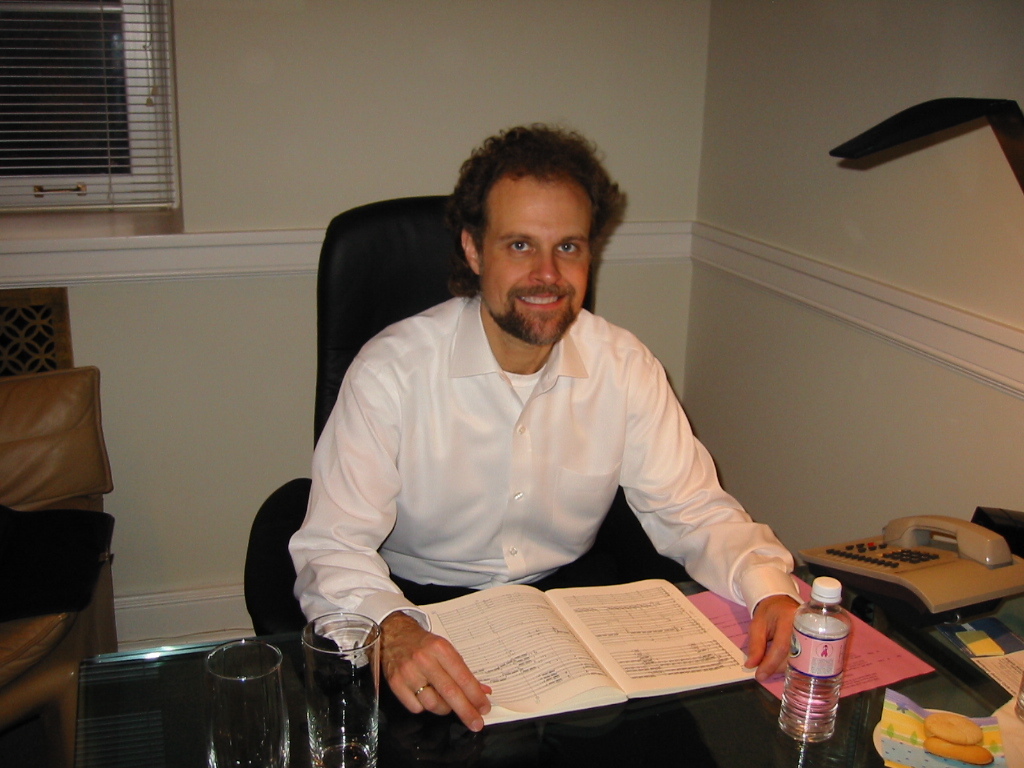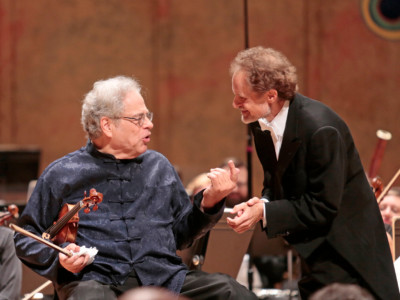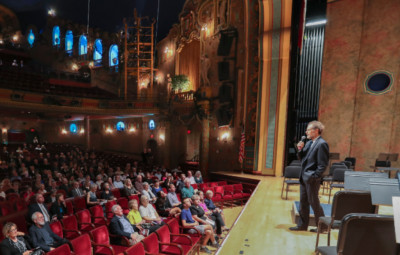
STEVEN SMITH
Conductor
PRESS

“Steven Smith led a gripping, authoritative performance that beautifully conveyed the score’s uncompromising personality. He was in firm command of the large structures, and he refused to take easy ways out or glide across the surfaces. Smith’s concept gave a brilliant and clear idea of what the composer had in mind, and the orchestra provided playing of consummate elegance, tonal depth and bold intensity.”
The Plain Dealer (Cleveland) Shostakovich: Symphony No. 5
The Plain Dealer (Cleveland) Shostakovich: Symphony No. 5
(The Cleveland Orchestra)
Richmond Times-Dispatch feature article, April 14, 2019
"In the penultimate program of his 10-year tenure as music director of the Richmond Symphony, Steven Smith led a showcase of dynamic, richly detailed and acutely color-sensitive performances of repertory spanning Europe, Asia and America.
The program featured the premiere of “she will transform you,” an orchestral-choral work by Reena Esmail, an American composer of Indian ancestry, as well as pieces by Ahmet Adnan Saygun, a French-schooled Turk who became his country’s first prominent symphonic composer; Colin McPhee, a Canadian so taken with the music of gamelan, the resonant percussion ensembles of Indonesia, that he emigrated to Bali; and Claude Debussy and Maurice Ravel, whose French impressionist style was informed by tonalities and stylistic influences far from Paris.
It was a fitting conclusion to the musical component of the University of Richmond’s Tucker Boatwright Festival, which has explored encounters between Western art forms and those of non-Western cultures, especially those of Asia. The 36-year-old, Los Angeles-based composer, Reena Esmail, draws on Indian antecedents…but produces music that fits snugly into the Western canon. The musical style and instrumental and vocal voicings of “she will transform you” could easily complement the impressionist-romantic music of Gabriel Fauré or Samuel Barber.
The Esmail premiere followed a performance of Saygun’s “Ayin Raksi” (“Ritual Dance”) (1975), a miniature tone poem that recasts Turkish melodies and dance rhythms in a colorful, intricate orchestration that stylistically echoes Debussy and Bartók.
McPhee’s “Tabuh-Tabuhan” (1936), a gamelan-inspired quasi-concerto grosso for two pianos and large, percussion-heavy orchestra, could be described as proto-minimalist, an exercise in progressively layered and elaborated ostinato that predates such efforts by the likes of Terry Riley and Philip Glass by several musical generations. …Smith and the symphony milked McPhee’s orchestration for maximum exuberance.
Smith, who has demonstrated his mastery of French impressionist music throughout his tenure here, punctuated that history with performances of Debussy’s Nocturnes and Ravel’s “Rapsodie espagnole” that could scarcely be bettered.
The choral forces were a bit too tremulous in the opening of “Sirènes,” but otherwise the Debussy unfolded with all the timbral subtlety and atmospheric breadth a listener could desire. The quizzically lyrical English horn solo of Shawn Welk set an exploratory tone at the beginning, and the exploration was a joy to join.
Smith paced “Rapsodie espagnole” rather deliberately – Welk again played a key role in musical characterization – establishing from the beginning that this would be a performance of tone painting as well as an evocation of Spanish dance. While the dance rhythms were vivid and extroverted, notably in the concluding “Feria” (“Festival”), an unusually sensuous treatment of the Habanera may have been even more satisfying.
Given the unfamiliar music that filled so much of this program, and the complexity of orchestration and range of tonal demands in every selection, this must count as one of the true virtuoso outings by this orchestra in recent years. Its outgoing music director proved to be an unerring guide."
Letter V: Classical Music Blog, Clarke Bustard, April 14, 2019
The program featured the premiere of “she will transform you,” an orchestral-choral work by Reena Esmail, an American composer of Indian ancestry, as well as pieces by Ahmet Adnan Saygun, a French-schooled Turk who became his country’s first prominent symphonic composer; Colin McPhee, a Canadian so taken with the music of gamelan, the resonant percussion ensembles of Indonesia, that he emigrated to Bali; and Claude Debussy and Maurice Ravel, whose French impressionist style was informed by tonalities and stylistic influences far from Paris.
It was a fitting conclusion to the musical component of the University of Richmond’s Tucker Boatwright Festival, which has explored encounters between Western art forms and those of non-Western cultures, especially those of Asia. The 36-year-old, Los Angeles-based composer, Reena Esmail, draws on Indian antecedents…but produces music that fits snugly into the Western canon. The musical style and instrumental and vocal voicings of “she will transform you” could easily complement the impressionist-romantic music of Gabriel Fauré or Samuel Barber.
The Esmail premiere followed a performance of Saygun’s “Ayin Raksi” (“Ritual Dance”) (1975), a miniature tone poem that recasts Turkish melodies and dance rhythms in a colorful, intricate orchestration that stylistically echoes Debussy and Bartók.
McPhee’s “Tabuh-Tabuhan” (1936), a gamelan-inspired quasi-concerto grosso for two pianos and large, percussion-heavy orchestra, could be described as proto-minimalist, an exercise in progressively layered and elaborated ostinato that predates such efforts by the likes of Terry Riley and Philip Glass by several musical generations. …Smith and the symphony milked McPhee’s orchestration for maximum exuberance.
Smith, who has demonstrated his mastery of French impressionist music throughout his tenure here, punctuated that history with performances of Debussy’s Nocturnes and Ravel’s “Rapsodie espagnole” that could scarcely be bettered.
The choral forces were a bit too tremulous in the opening of “Sirènes,” but otherwise the Debussy unfolded with all the timbral subtlety and atmospheric breadth a listener could desire. The quizzically lyrical English horn solo of Shawn Welk set an exploratory tone at the beginning, and the exploration was a joy to join.
Smith paced “Rapsodie espagnole” rather deliberately – Welk again played a key role in musical characterization – establishing from the beginning that this would be a performance of tone painting as well as an evocation of Spanish dance. While the dance rhythms were vivid and extroverted, notably in the concluding “Feria” (“Festival”), an unusually sensuous treatment of the Habanera may have been even more satisfying.
Given the unfamiliar music that filled so much of this program, and the complexity of orchestration and range of tonal demands in every selection, this must count as one of the true virtuoso outings by this orchestra in recent years. Its outgoing music director proved to be an unerring guide."
Letter V: Classical Music Blog, Clarke Bustard, April 14, 2019
"Wrapping this Figaro into Mozart’s finely crafted musical tapestry was the job of Maestro Steven Smith. Working with members of the Richmond Symphony—which he directs during its regular season—
Mr. Smith put together a near-perfect Mozartian sound, robust yet delicate, willowy and beautiful yet bristling with moments of comedy when the action and the score required it. Best of all, the ensemble worked with, and not against, the singers onstage, always a key issue."
The Washington Times Mozart: The Marriage of Figaro
(Virginia Opera)
"Smith and the orchestra reveled in the colors and effects with which Del Tredici depicts this memorable summer day. Every section made sensitive and forceful contributions, and the various soloists were distinguished. And it was no surprise that Del Tredici looked overjoyed when he came onstage at the end. CIM had just given him the best birthday present a composer could desire."
The Plain Dealer (Cleveland) David Del Tredici: In Memory of a Summer Day (Cleveland Institute of Music)
"Kodaly's Dances of Galanta was the perfect opener for the Auckland Philharmonia's Thursday concert. The orchestra was in fine form, under the baton of visiting American conductor Steven Smith. A fervent cello song in the opening bars augured well, and Smith eventually swept the piece to its exultant close.
A few days earlier, Smith told me Brahms' Second Symphony should be something of a journey from dark into light. He made it just that in a gripping symphonic performance. Stressing the "non troppo" status of the first two movements, the first pitted sweeping strings against inevitable woodwind and burly, sinister trombones, until the final dancing Coda. Momentum was well sustained in the Adagio and, after an appreciated tuning up from the orchestra, the Allegretto grazioso had a litheness that would have served it well on the ballet stage, with its Presto sounding uncannily like Tchaikovsky. The Finale was a joyful outburst, Bachian in its splendour and confidence. A magnificent journey had been achieved."
New Zealand Herald, Auckland Kodaly: Dances of Galanta, Brahms: Symphony No. 2
New Zealand Herald, Auckland Kodaly: Dances of Galanta, Brahms: Symphony No. 2
"Cancel the dinner party, drop the kids off at Grandma’s, delay the vacation — do what you have to do. But go hear this concert.
Steven Smith, the orchestra’s associate conductor, produced the season’s most emotionally gratifying concert of all.
It started with a swashbuckling Strauss “Don Juan,” blistering at the start, breathtakingly tender in its seductive stretches. This was an admiring gloss on the infamous rake, quite as one suspects Strauss intended. He was muscular and dazzling, but he could also charm the leaves off the trees. And as sheer sonic extravaganza, this was the bee’s knees.
Charles Ives’ “Three Places in New England” is a trilogy of quite different tone poems: mists and wisps, with motifs struggling to be born; a giddy kaleidoscope of camp-meeting Americana; lazy eddies from which poignant melodies surface. Smith conducted a performance of quite special delicacy and affection.
No composer is more roughly handled today than Brahms — over-thickened, overplayed, more notey than poetic. But pianist Norman Krieger, Smith and company offered the most moving D minor Piano Concerto (No. 1) in memory.
Right from the start, Smith got points for supplying a true, unforced, Brahmsian — as opposed to Bartokian — fortissimo. And throughout, the orchestra phrased with a subtlety all too rare in these Brahms-challenged times. Never has this piece seemed more profound an emotional experience, high drama balanced by the most intimate, even painful self-revelation. Music-making on this level is precious indeed. "
Steven Smith, the orchestra’s associate conductor, produced the season’s most emotionally gratifying concert of all.
It started with a swashbuckling Strauss “Don Juan,” blistering at the start, breathtakingly tender in its seductive stretches. This was an admiring gloss on the infamous rake, quite as one suspects Strauss intended. He was muscular and dazzling, but he could also charm the leaves off the trees. And as sheer sonic extravaganza, this was the bee’s knees.
Charles Ives’ “Three Places in New England” is a trilogy of quite different tone poems: mists and wisps, with motifs struggling to be born; a giddy kaleidoscope of camp-meeting Americana; lazy eddies from which poignant melodies surface. Smith conducted a performance of quite special delicacy and affection.
No composer is more roughly handled today than Brahms — over-thickened, overplayed, more notey than poetic. But pianist Norman Krieger, Smith and company offered the most moving D minor Piano Concerto (No. 1) in memory.
Right from the start, Smith got points for supplying a true, unforced, Brahmsian — as opposed to Bartokian — fortissimo. And throughout, the orchestra phrased with a subtlety all too rare in these Brahms-challenged times. Never has this piece seemed more profound an emotional experience, high drama balanced by the most intimate, even painful self-revelation. Music-making on this level is precious indeed. "
The Kansas City Star Strauss: Don Juan, Ives: Three Places in New England, Brahms: Piano Concerto No. 1
"This “Oxford” just may have been the best performance of a classical symphony the orchestra has delivered in a decade or more."
Richmond Times-Dispatch Haydn: Symphony No. 92 “Oxford”
Richmond Times-Dispatch Haydn: Symphony No. 92 “Oxford”
"The Richmond Symphony’s concert production, concluding the
orchestra’s 2013-14 season, is as dramatically potent as any
staged opera seen and heard here in recent years."
staged opera seen and heard here in recent years."
Richmond Times-Dispatch Berlioz: Le damnation de Faust
"In the first of two performances of the “Resurrection,” Smith showed a firm grasp of most of the demands this music makes. He paced the symphony unerringly, and with great sensitivity to its extraordinary dynamic range, from earth-shatteringly loud to a level of quiet that is almost sensed more than heard. He maintained fine balance between string sections not much larger than the orchestra’s usual complement and oversized wind and percussion sections. He obtained idiomatically Viennese waltz tempos in the second and third movements."
Richmond Times-Dispatch Mahler: Symphony No. 2 "Resurrection"
"It's difficult to believe that two years have passed since an Auckland concert hall resounded to the Hebrides Overture. On Saturday, American conductor Steven Smith was determined to give Mendelssohn a more classical treatment, with sculpted lines and minimal billowing - you could hear the bassoons shadowing the cellos in their soaring second subject.
After interval, and a few words from Smith comparing the concert to a smorgasbord ("We can skip salad entirely now and have two desserts") we were given the pairing of Mozart and Tchaikovsky that the conductor was anticipating.
If Mozart's Haffner Symphony was an example of the composer "showing off", as Smith put it, then the American conductor and his players were the perfect accomplices. The first movement was uncluttered and confident. The violins, benefiting from the strong leadership of Dimitri Atanassov, had a few ragged moments, but the ensemble was shipshape, especially when the woodwind dovetailed through the texture. The trio of the third movement was a miracle of detail to its smallest inflection, and the finale tumbled away with remarkable precision.
The concert ended with Tchaikovsky's Romeo and Juliet, which again benefited from Smith's restraint, emphasising sombre woodwind colours and showcasing Rebecca Harris' harp along with some eloquent viola lines.
A lively Russian Dance from Tchaikovsky's Nutcracker Suite was a tasty encore."
New Zealand Herald, Auckland Mendelssohn: Hebrides,
After interval, and a few words from Smith comparing the concert to a smorgasbord ("We can skip salad entirely now and have two desserts") we were given the pairing of Mozart and Tchaikovsky that the conductor was anticipating.
If Mozart's Haffner Symphony was an example of the composer "showing off", as Smith put it, then the American conductor and his players were the perfect accomplices. The first movement was uncluttered and confident. The violins, benefiting from the strong leadership of Dimitri Atanassov, had a few ragged moments, but the ensemble was shipshape, especially when the woodwind dovetailed through the texture. The trio of the third movement was a miracle of detail to its smallest inflection, and the finale tumbled away with remarkable precision.
The concert ended with Tchaikovsky's Romeo and Juliet, which again benefited from Smith's restraint, emphasising sombre woodwind colours and showcasing Rebecca Harris' harp along with some eloquent viola lines.
A lively Russian Dance from Tchaikovsky's Nutcracker Suite was a tasty encore."
New Zealand Herald, Auckland Mendelssohn: Hebrides,
Mozart: “Haffner” Symphony, Tchaikovsky: Romeo and Juliet
"It’s always gratifying to hear a piece of music played with utmost concentration and urgency, as if it were a matter of life and death. It’s absolutely necessary in a successful performance of Carl Nielsen’s Fourth Symphony, which actually is a matter of life and death. In its Masterworks program on Saturday night, the Richmond Symphony and its music director, Steven Smith, rose to Nielsen’s formidable technical and expressive challenges in a performance marking the 150th anniversary year of the Danish composer’s birth. Every section of the
orchestra, and many of its solo players, were at the top of their game; and Smith was at the top of his, guiding the musicians securely through the complex fabric of this score."
orchestra, and many of its solo players, were at the top of their game; and Smith was at the top of his, guiding the musicians securely through the complex fabric of this score."
Richmond Times-Dispatch Nielsen: Symphony No. 4 "Inextinguishable"
MEDIA
Stravinsky
Le Chant du Rossignol
Mahler
Symphony No. 10, Adagio, part 2
